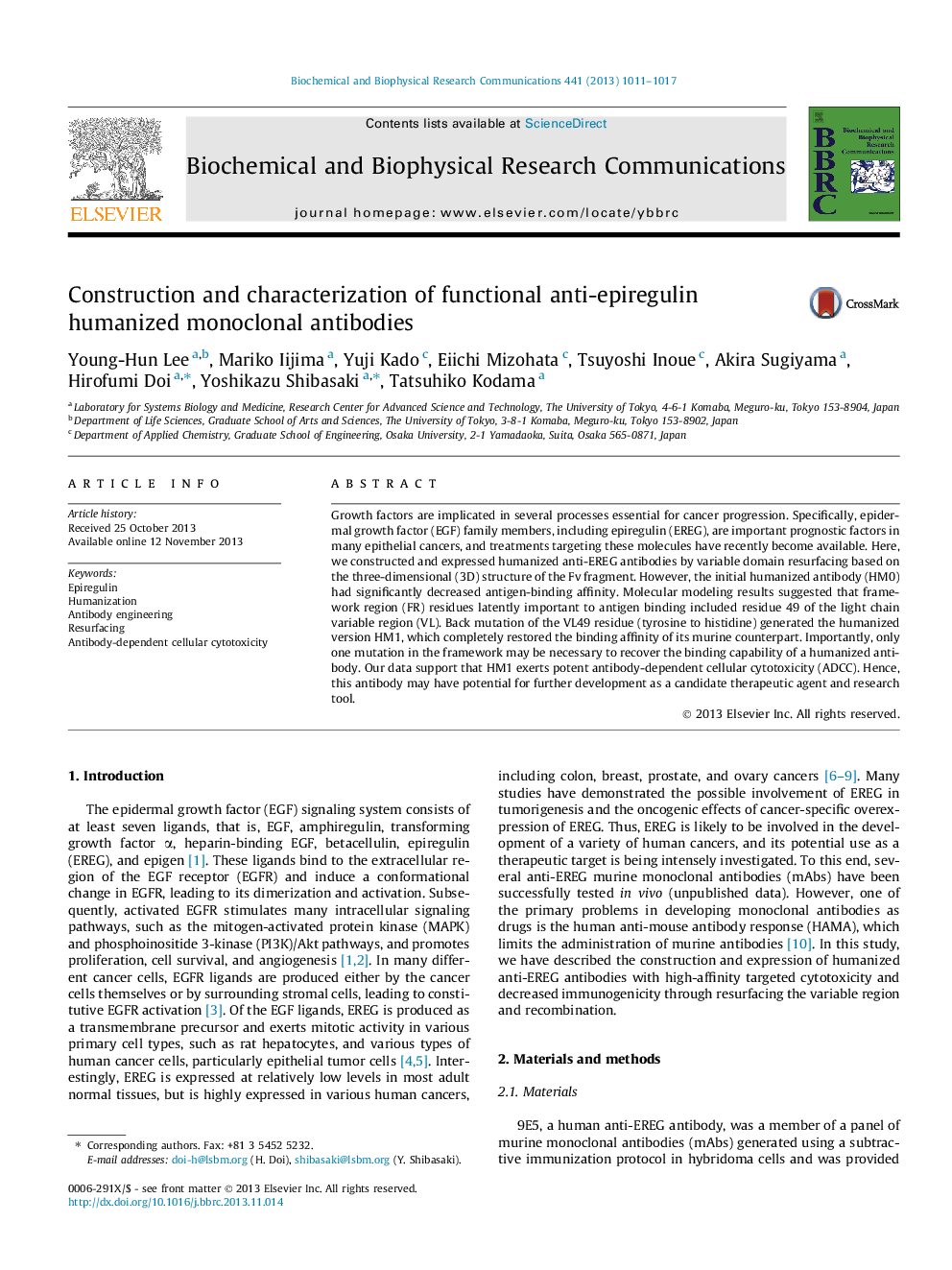| Article ID | Journal | Published Year | Pages | File Type |
|---|---|---|---|---|
| 10757710 | Biochemical and Biophysical Research Communications | 2013 | 7 Pages |
Abstract
Growth factors are implicated in several processes essential for cancer progression. Specifically, epidermal growth factor (EGF) family members, including epiregulin (EREG), are important prognostic factors in many epithelial cancers, and treatments targeting these molecules have recently become available. Here, we constructed and expressed humanized anti-EREG antibodies by variable domain resurfacing based on the three-dimensional (3D) structure of the Fv fragment. However, the initial humanized antibody (HM0) had significantly decreased antigen-binding affinity. Molecular modeling results suggested that framework region (FR) residues latently important to antigen binding included residue 49 of the light chain variable region (VL). Back mutation of the VL49 residue (tyrosine to histidine) generated the humanized version HM1, which completely restored the binding affinity of its murine counterpart. Importantly, only one mutation in the framework may be necessary to recover the binding capability of a humanized antibody. Our data support that HM1 exerts potent antibody-dependent cellular cytotoxicity (ADCC). Hence, this antibody may have potential for further development as a candidate therapeutic agent and research tool.
Keywords
Related Topics
Life Sciences
Biochemistry, Genetics and Molecular Biology
Biochemistry
Authors
Young-Hun Lee, Mariko Iijima, Yuji Kado, Eiichi Mizohata, Tsuyoshi Inoue, Akira Sugiyama, Hirofumi Doi, Yoshikazu Shibasaki, Tatsuhiko Kodama,
